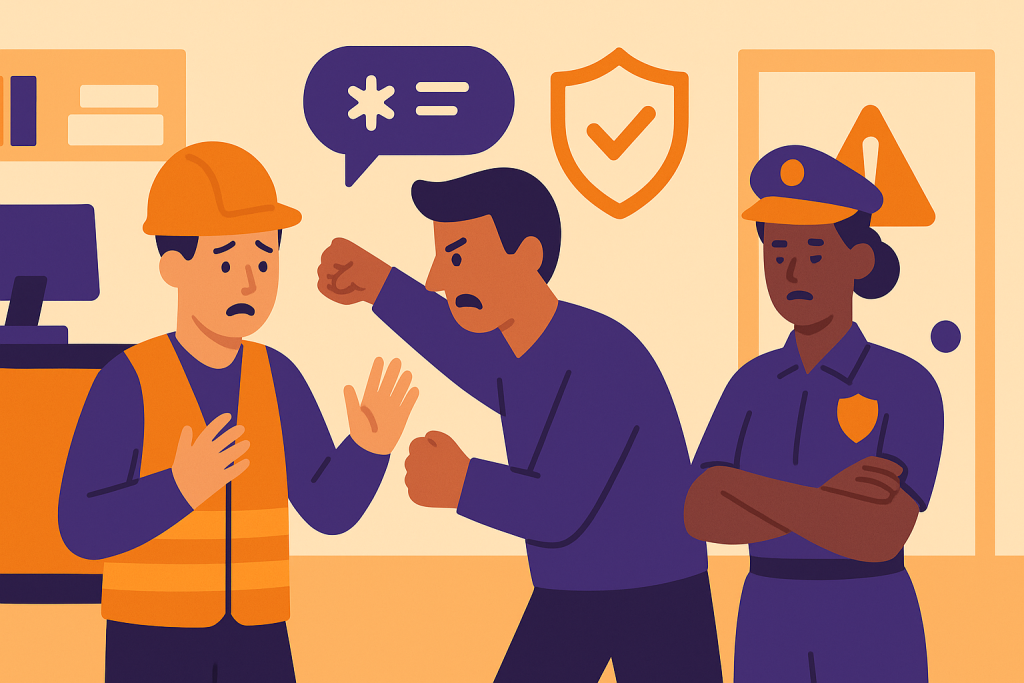
Workplace violence includes any act or threat of violence against workers. It can happen anywhere — inside or outside the workplace — and ranges from verbal abuse and threats to physical assaults and even homicide.
No job is completely free from risk, but with awareness and the right safety practices, the risk can be reduced.
Who Is Most at Risk?
Some jobs carry a higher risk of workplace violence, especially when workers:
- Handle cash transactions with the public.
- Deliver goods, services, or transport passengers.
- Work alone, in small groups, late at night, or early morning.
- Work in high-crime areas or do home/community visits.
High-risk jobs include retail workers, delivery drivers, utility workers, healthcare providers (like visiting nurses), taxi drivers, phone or cable installers, and social service employees like probation officers.
How Employers Can Help Protect Workers
✔️ Create a Workplace Violence Prevention Program
- Add it to the employee handbook or safety procedures.
- Communicate the policy clearly: all incidents are taken seriously and investigated.
✔️ Provide Safety Training
- Teach employees how to handle aggressive situations and how to de-escalate conflicts.
- Show how to protect themselves if a situation turns violent.
✔️ Secure the Workplace
- Use video surveillance, alarm systems, and proper lighting.
- Control entry with ID badges, electronic keys, or security guards.
- Collaborate with police and building management to improve safety.
✔️ Reduce Cash Risks
- Use drop safes and keep only minimal cash in registers, especially at night.
✔️ Equip Staff Working Off-Site
- Provide mobile phones or alarm devices.
- Set daily check-in routines so staff can report their locations.
✔️ Use a Buddy System
- For risky situations, never send staff alone. Offer escorts or arrange for police assistance when needed.
✔️ Set Clear Home Visit Policies
- Allow workers to refuse service in unsafe environments.
- Define procedures for home visits, including who should be present.
How Employees Can Protect Themselves
- Take personal safety training — learn to recognize and defuse risky situations.
- Review the company’s violence prevention program regularly.
- Report any concerns or incidents immediately, in writing.
- Avoid going alone to unfamiliar or unsafe areas when possible.
- Carry minimal cash and only essential IDs.
- Inform supervisors about conflicts before they escalate.
What Should Happen After an Incident?
- All incidents and threats must be reported and logged.
- Provide immediate medical care and trauma support for victims.
- Notify law enforcement right away.
- Help employees understand their legal rights to prosecute offenders.
- Offer stress management and post-trauma counseling.
- Review what happened with the team to improve future safety.
- Investigate thoroughly and take corrective actions.
- Update workplace policies if needed.
Workplace Violence Can Be Prevented
It’s not just about reacting — it’s about preparing. A safe workplace is one where everyone knows the risks, the rules, and how to act if something goes wrong.
Safety is everyone’s responsibility — let’s protect each other.